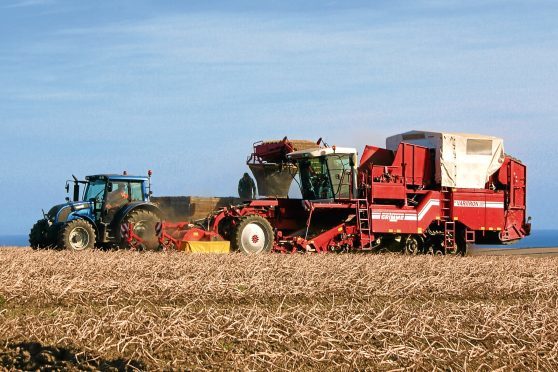The repatriation of convergence uplift funding, and an additional £50m funding boost, will be highly welcomed by farmers, crofters and everyone working in industry.
Years of lobbying, with what often seemed like little light at the end of the tunnel, concluded this week with the publication of the Bew Review Group recommendations and confirmation of the return of “stolen” convergence funds north of the border.
Many say the money must go to those farming in disadvantaged areas as that is where the original funding was meant to go in the first place. However others say the money must be used to benefit the whole industry.
Every different sector will argue why they need the money and Scottish Government, along with industry, must devise a way to use it to the benefit of all.
My suggestion for a way to use some of the money, to the benefit of everyone in the sector, is a cross-industry marketing drive to reconnect farmers and consumers.
As a soon-to-be farmer’s wife, I’m often asked to help on the farm at the weekends and in the evenings.
Most recently I’ve been drafted on to the back of the tattie harvester in a field located beside a new housing development. While working away to remove clods and stones, I was taken aback by the amount of people stopping to watch what was going on.
One man came back several times and filmed various videos to show his friends. A young mum, with a baby and young child, was also eagerly watching the machinery at work.
It got me thinking – I bet these people had no idea what was growing in the field and they have no idea what is being loaded into boxes and carted away to the tattie store.
The same applies to fields of any crop, whether it be barley, cauliflower or oats, and fields housing livestock.
This disconnect between farmers and the general public could also lie behind problems with livestock worrying, flytipping and the current rise of meat-bashing in the fight against climate change.
We, as an industry, can take simple steps to tell people what’s going on. The growing popularity of agritourism businesses highlights the appetite among consumers to learn more about farming.
Why not put a banner on the outside of a field telling people what you’re growing, or what your animals are being kept for?
Slogans like ‘Growing tatties for your chips’ or ‘Proudly growing barley for your whisky’ would go a long way in giving the public an appreciation of what farmers do.
Surely investment in some kind of marketing would help safeguard the industry and inspire shoppers to buy Scottish.
